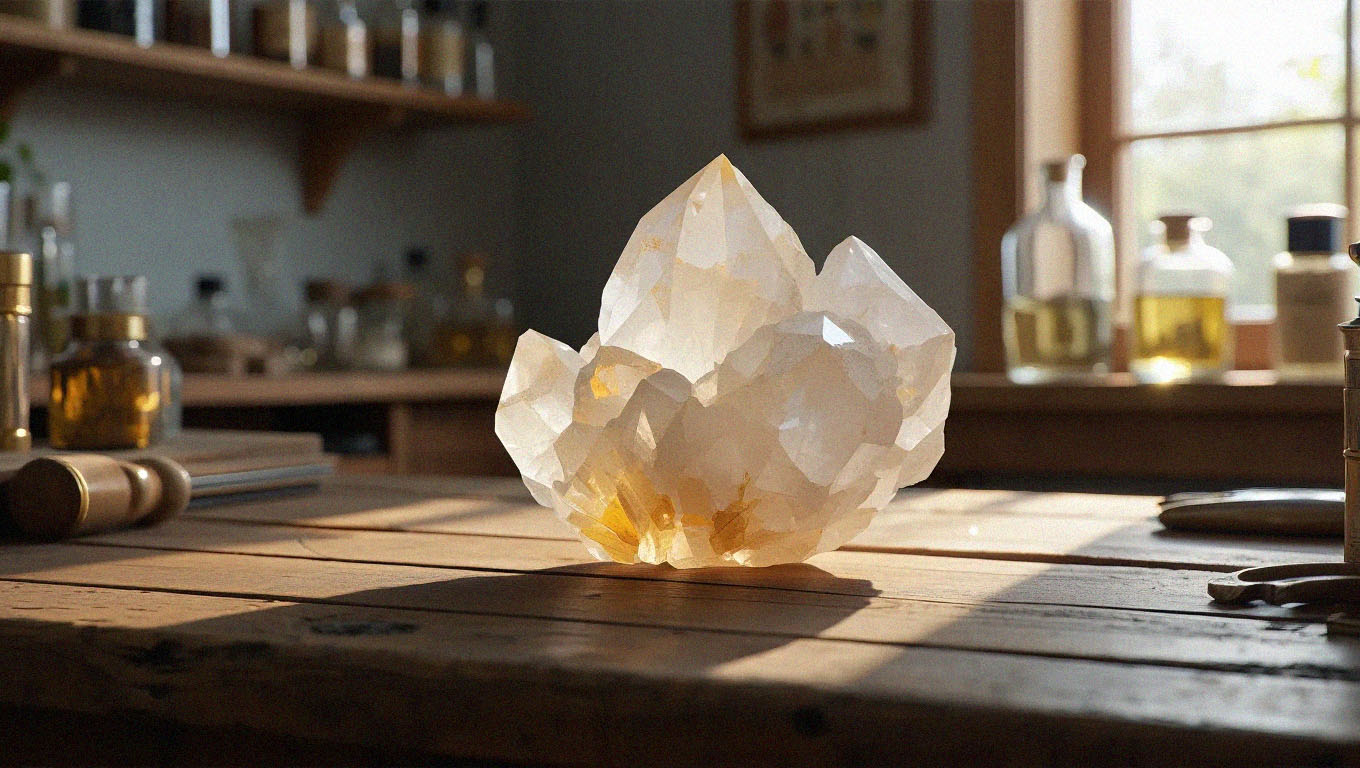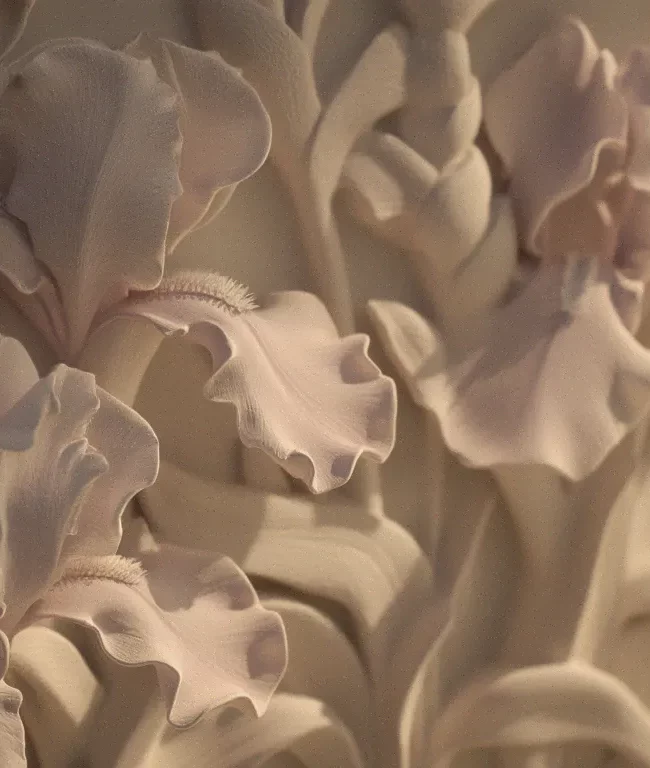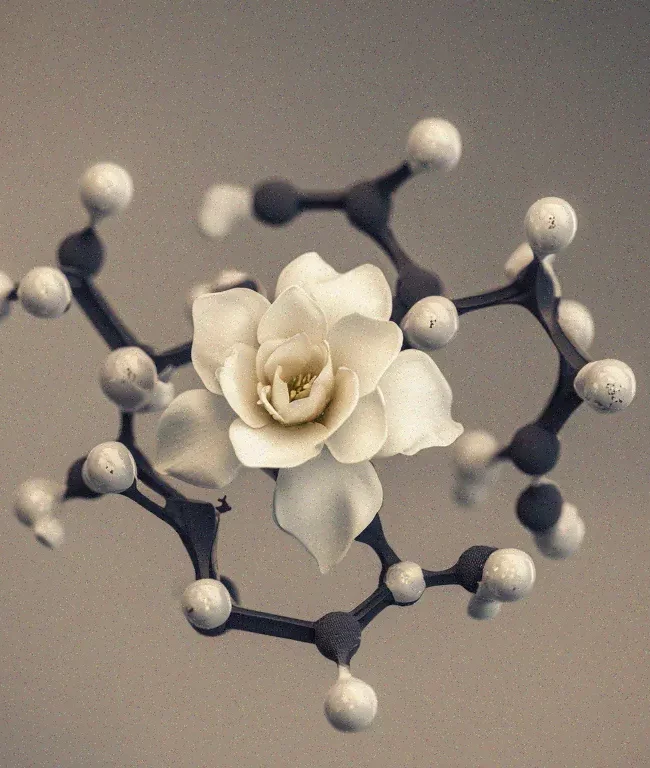
Mineral Notes in Perfumery: Capturing Stone, Salt & Concrete in Scent
In recent years perfumers have been fascinated by mineral facets – the clean, salty, or stony sensations of rock, rain, and sea. These notes are abstract (you can’t literally extract “rock oil”), so perfumers use synthetic molecules or smart accords to recreate them. For example, one iconic fragrance in 2006 contrasted earth and sea: perfumer Jean-Claude Ellena added a lab-created “flint” note that gave the scent an “earthy, powerful, moist and mineral” freshness. Since then, a wave of fresh, abstract compositions has embraced “mineral” themes (wet pavement, ozone, damp stone) to appeal to modern tastes for clean, ethereal scents.
Scent Profiles of Mineral Materials
Mineral-like effects in perfume are achieved by specific raw materials. Below are the key categories and how they smell:
- Aquatic/Ozone Molecules (Calone, Cascalone, etc.): Calone (the classic “marine” note) smells like fresh cucumber/melon and sea breeze. Perfumers describe it as “marine, ozone, floral, melon… green, fresh.” Cascalone (Calone 1951) and analogues evoke surf spray, wet rocks or a cold mist.
- Ambergris Facsimiles (Ambroxan/Ambrox): These synthetics mimic ambergris and smell dry, woody-amber and musky. Ambroxan is famous for a “clean dry ambergris” effect. Cetalox gives “sweet, musky, amber” richness, providing a warm-amber foundation that feels slightly saline.
- Dry Ambers (Norlimbanol, etc.): Firmenich’s Norlimbanol smells like very dry cedarwood-amber – “extreme dryness, absolute desiccation.” Used sparingly it adds a crunchy, desiccated woodiness.
- Abstract Woods (Iso E Super, Cashmeran, etc.): Iso E Super® is “smooth, woody, amber” with a velvet sensation. Cashmeran smells woody-spicy-musk. Together they give a cool, modern woody character – like polished cedar or cold timber.
- Ozonic/Aldehydic Accents and Lactones: Fatty aldehydes (C-18) or ozone-mimics add a soapy, metallic “fresh air” note. Lactones and musks (muscone, galaxolide) bring creamy, powdery or watermelon-like facets that simulate wet concrete or rain.
Why Mineral Notes are Trending
The appeal of mineral accords ties into current trends and imagery. Today’s consumers seek “clean,” “ethereal,” nature-inspired scents. Trend reports identify a “Clean Zest” theme combining mineral notes, salty touches and fresh aromatics. Mineral textures – like salt crystals or wet stones – convey a sharp, invigorating freshness, evoking sea air, wet pavement, river rocks or mountain air. In short, mineral accords meet a desire for fresh, open, and clean scent impressions, aligning with minimalist and environmental aesthetics.
Formulating a “Concrete” Accord
To capture a stone-like mineral impression, perfumers balance aquatic, woody and powdery elements. A sample “concrete accord” might look like this (percentages by weight of the parfum concentrate):
Calone (marine aldehyde)................. 20%
Hedione (methyl jasmonate)............... 10%
Iso E Super.............................. 15%
Cashmeran................................ 10%
Ambroxan................................. 15%
Norlimbanol.............................. 10%
Vetiveryl acetate......................... 5%
Cyclopentadecanolide (lavender musk)...... 5%
Aldehyde C-18............................. 2%
----
100%Here, Calone and Hedione give the wet/marine hit; Iso E Super and Cashmeran provide modern woody nuance; Ambroxan and Norlimbanol dry down on warm, dusty amberwood; vetiveryl acetate adds earthy green; and a musky lactone plus aldehyde finish lend a soft, powdery-airy edge. The result is reminiscent of damp concrete or river-worn stone – saline and slightly powdery, yet airy and abstract.
Perfumers and Mineral Fragrances
- Jean-Claude Ellena (Hermès) – Terre d’Hermès used a synthetic “flint” alongside green leaves and citrus to conjure wet soil and rock.
- Sonia Constant (Givaudan) – Composed a “mineral accord” with Ambroxan and myrrh to evoke cold concrete and sculptures, balanced with powdery vanilla/iris.
- Christine Nagel – Created a Venetian lagoon cologne with a “briny accord” of magnolia and lily for a “salt and sunlight” effect.
- Romano Ricci – “Not A Perfume” uses cetalox alone to deliver a minimalist ambergris/musky accord.
Beyond Stone: The Full Mineral Spectrum
“Mineral” spans a broad olfactory palette:
- Metallic – Synthetics mimic iron or copper for a high-tech freshness.
- Chalky/Powdery – Orris or aldehydes impart a soapy-chalk character.
- Ozonic/Atmospheric – Cyclamen aldehyde evokes a watery floral breeze.
- Wet earth (petrichor) – Blends of ozone, geosmin and damp green notes mimic rain on stone.
Conclusion
Modern perfumery’s mineral trend shows that even the most abstract inspirations – stone, salt, earth – can be translated into fragrances that feel both natural and surprising. By leveraging calone derivatives, ambergris facsimiles, dry ambers and abstract woods, perfumers evoke sensations of coastline, concrete, and petrichor. The rise of mineral notes demonstrates chemistry meeting artistry to capture the essence of rock and sea in every spritz.




